Binance
The Great Battle of Asset Classification – Blockchain News, Opinion, TV and Jobs
Published
11 months agoon
By
admin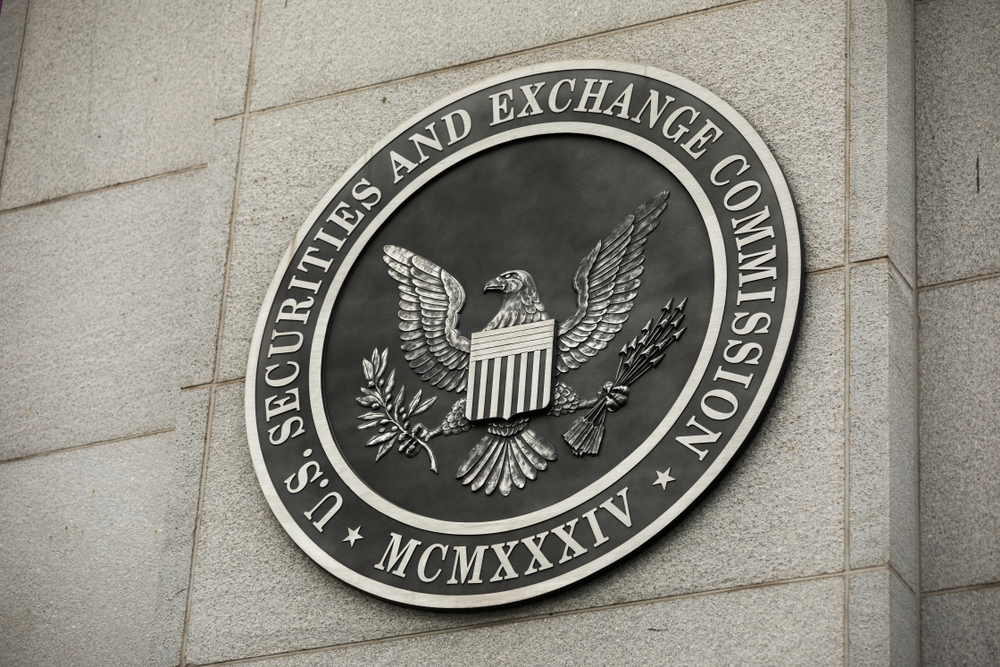
Guest post by Giovanni Populo
The SEC has charged two major cryptocurrency exchanges: Binance and Coinbase. A common charge between both exchanges is that they offered unregistered securities on their platforms.
1.1 Security vs. Commodity
A security is a financial asset that represents an investment and has an inherent value. It can be traded on a secondary market and its value is derived from a claim on assets or earnings. The Howey Test, established by the Supreme Court and very well-known by the market, is often used to determine whether an asset is a security. The test has four requirements:
- Investment of Money: There must be an investment of money or some form of contribution.
- Common Enterprise: The money must be invested in a common enterprise, meaning that the fortunes of the investor and the promoter are interlinked.
- Expectation of Profit: The investor must have an expectation of profit.
- Efforts of Others: The investor must enter into the investment with the expectation that they will receive a return or profit on their investment. This profit could come in the form of dividends, revenue share, price appreciation, or other financial returns. The key point is that the investor is motivated by the prospect of a financial gain from their investment.
A commodity, on the other hand, is a basic good that is used as an input in the production of other goods or services. Its value is derived from its inherent properties and usefulness. While there isn’t a specific test like the Howey Test for commodities, they generally have the following characteristics:
- Interchangeability: Commodities of the same type are identical to each other, regardless of who produced them.
- Used in Production: Commodities are often used as inputs in the production of other goods or services.
- Inherent Value: The value of a commodity comes from its inherent properties and usefulness, not from the efforts of others.
- Traded on Commodity Markets: Commodities can be bought and sold on commodity markets.
1.2 Easy-to-Understand Examples
An example of security could be a share of stock in Apple Inc. When you buy a share of Apple Stock ($A ), you are buying a piece of the company and have a claim on part of the company’s assets and earnings.
An example of a commodity could be the lithium used in the production process of the iPhone, which is later on transformed into batteries. Lithium from different sources is considered identical and interchangeable. Its price is uniform across the market, barring quality differentials.
II. Applying the Concept to Cryptocurrencies
Bitcoin and Ethereum were NOT mentioned by the SEC in any of the lawsuits, which suggests that their interpretation is more towards commodities than securities – or at least they are not sure about them. In recent hearings, SEC representatives have been inconsistent in their stance, raising concerns over its capacity to interpret digital assets.
But, what would be the technical interpretation of such assets, considering current market understanding and past rulings?
2.1 Bitcoin (BTC)
Bitcoin is a decentralized digital currency without a central bank or single administrator. It can be sent from user to user on the peer-to-peer Bitcoin network without the need for intermediaries.
Let’s see how the Howey Test looks would apply:
- Investment of Money? Check.
- Common Enterprise? Nope, Bitcoin’s value is not tied to the fortunes of a separate enterprise.
- Expectation of Profit? Check, many people buy Bitcoin with the expectation of profit.
- Efforts of Others? Nope, Bitcoin’s value does not come predominantly from the efforts of others.
What about commodities?
- Interchangeability? Check.
- Used in Production: Somewhat. Bitcoin is not used as a direct input in production, but rather energy is. However, Bitcoin is used for the production of the information registry that we usually call blockchain.
- Inherent Value: Check.
- Traded on Commodity Markets: Check.
General market interpretation tends to think of $BTC as a Commodity.
Note: This is not an official classification, but rather an opinion based on common sense and talks by SEC representatives that signal the same direction. As mentioned previously, the SEC is still debating such classifications, and as of now, there are no concrete answers by US government agencies.
2.2 Ethereum (ETH)
Ethereum is an open-source, blockchain-based platform that enables developers to build and deploy decentralized applications (dApps). Its native cryptocurrency is called Ether (ETH).
Let’s try the Howey Test again:
- Investment of Money: Check.
- Common Enterprise: Nope, Ether’s value is not tied to the fortunes of a separate enterprise.
- Expectation of Profit: Check, many people buy Ether with the expectation of profit.
- Efforts of Others: No, Ether’s value does not come predominantly from the efforts of others.
What about the commodity characteristics?
- Interchangeability? Check.
- Used in Production: Check.
- Inherent Value: Check.
- Traded on Commodity Markets: Check.
General market interpretation, in the case of $ETH, is split due to staking features, but considering just the checklists above, closer to a Commodity than Security.
Note: Same as the previous note, not a formal legal classification, but rather just market opinion.
It is important to understand that crypto assets are very new compared to traditional assets, and the classification guidelines covered above were built only for the latter – TradFi. As proposed by Gabriel Shapiro on Twitter, we should start discussing alternative classifications when dealing with digital assets, as to consider the new variables introduced by blockchain technology. As he proposes, digital assets could be a security and a commodity at the same time, depending on different requirements. His idea would work as below:
Security
- Insiders’ tokens (even if from end-user distributions)
- Tokens sold by insiders to third parties, if the relevant system is not yet functional and decentralized
Commodity
- Tokens from “end user distributions” (mining, airdrop, etc. for a functional system)
- Tokens intrinsically relating to a functional, decentralized system
- Stablecoins
In short, this would interpret tokens as security or commodity depending on how it was acquired (investors, ICOs), use case (e.g. utility vs. stablecoin), and ecosystem decentralization level.
Clearly, such a proposal makes a lot of sense to the crypto market, since it applies key features and characteristics to classify an asset as one or the other. This is just one example of an alternative approach, but that should serve as motivation for us to contribute to the discussion and create our own versions of it.
The legal drama involving the U.S. Securities and Exchange Commission (SEC) and major cryptocurrency exchanges, Binance and Coinbase, has left the crypto world speculating on the potential implications and outcomes. The charges in question pertain to the alleged offering of unregistered securities, including but not limited to ADA, SOL, MATIC, and BNB. As it is critical to understand, these are currently just allegations and the legal process is yet to run its course. The final decision on these cases could serve as a regulatory beacon, profoundly impacting the crypto industry at large. So, what could these implications look like under different scenarios?
In one scenario, the SEC emerges victorious in its lawsuits, setting a precedent for stricter regulatory oversight of crypto exchanges. This would likely mean a redefinition of what constitutes security within the crypto domain, potentially based on parallels drawn from the projects the SEC has claimed to be securities. In this scenario, it’s plausible that we’ll witness an influx of enforcement actions against other platforms that fall within similar operational characteristics. A heavier regulatory environment could stifle innovation or push it offshore, leading to a challenging environment for U.S-based exchanges and Web3 projects. This scenario seems to be unlikely given the complexity of crypto assets and the evolving dynamics of the crypto market. Moreover, as some experts suggest, imposing traditional security laws on crypto assets could create more regulatory confusion rather than clarity.
The other sees the SEC losing the lawsuits, resulting in a much broader interpretation of cryptocurrencies as commodities. This could potentially loosen the grip of regulatory oversight, providing room for the crypto industry to flourish. Yet, the downside is that without proper guidelines, there could be an increased risk for investors, which could, in turn, affect the overall market stability.
Looking ahead, we find ourselves at a crossroads. The conclusion of these legal cases will significantly influence the regulatory landscape for crypto in the U.S. and likely globally. If I were to guess, I’d suggest that the degree of decentralization within networks could become a determining factor in classifying something as a security. Brand new regulation for digital assets also seems to be a likely outcome.
Looking beyond the immediate challenges, we need to continue fostering open discussions around digital asset classifications and encouraging innovation within the regulatory frameworks. We should support efforts that aim to find a balance between facilitating crypto’s immense potential and safeguarding the interests of all participants. After all, the goal is to ensure that the crypto industry thrives, regardless of the legal and regulatory environment it operates in.
Always forward-looking, always ahead of the game. Let’s keep the conversation going.
Source link
You may like


Insight Into The Timing And Factors
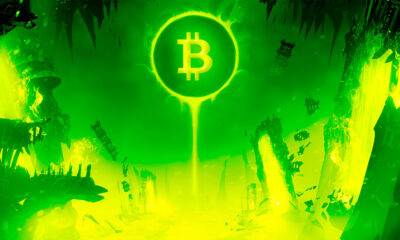

Bitcoin About To ‘Blow Higher’ Despite This Week’s Pullback, According to Glassnode Co-Founders – Here’s Why
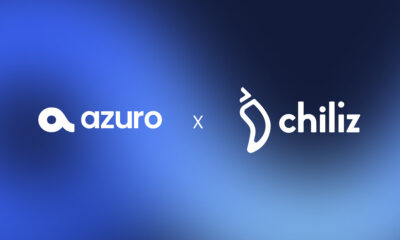

Azuro and Chiliz Working Together to Boost Adoption of Onchain Sport Prediction Markets – Blockchain News, Opinion, TV and Jobs


Robinhood Bleeds 164 Million Dogecoin
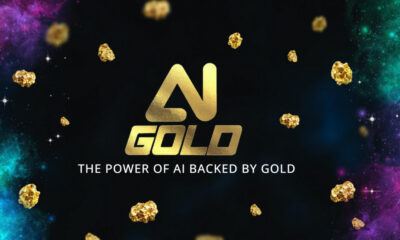

AIGOLD Goes Live, Introducing the First Gold Backed Crypto Project – Blockchain News, Opinion, TV and Jobs


Analyst Benjamin Cowen Warns Ethereum ‘Still Facing Headwinds,’ Says ETH Will Only Go Up if Bitcoin Does This
Altcoins
Binance Launchpool Rolls Out Staking and Trading Support for New Layer-1 Blockchain Project
Published
1 month agoon
April 14, 2024By
admin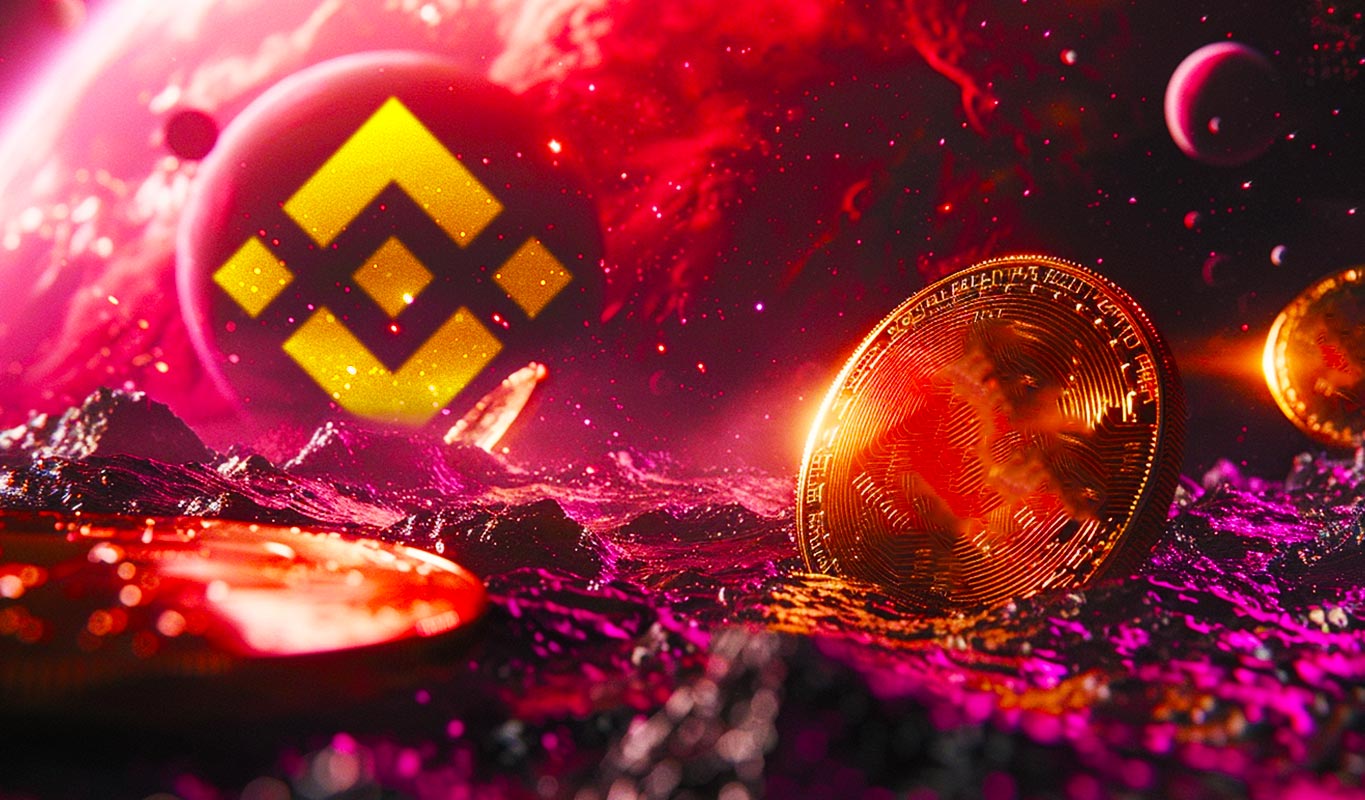
Top global crypto exchange Binance is planning on launching trading support for another new layer-1 altcoin project via its Launchpool platform.
Binance Launchpool, which lets users stake coins to farm new assets, says its 52nd project will be Omni Network (OMNI), a network that aims to integrate Ethereum’s (ETH) rollup ecosystem into a single, unified network.
Explains the project,
“Omni is an Ethereum-native interoperability protocol that establishes low-latency communications between all Ethereum rollups. Omni offers a secure, performant, and globally compatible architecture that presents Ethereum as a single, unified operating system to both users and developers.”
Between April 13th and 17th, Binance users can stake BNB, the crypto exchange platform’s native asset, as well as the stablecoin First Digital USD (FDUSD) into separate pools to farm OMNI tokens.
The exchange then plans to list the asset on April 17th. Binance will attach a seed tag to OMNI, which the exchange applies to lower-liquidity projects that may exhibit higher volatility compared to other listed tokens.
Binance requires users who own assets with seed tags to pass quizzes every 90 days to ensure they’re aware of the risks before trading the tokens.
Last week, Binance Launchpool kicked off support for Saga (SAGA), a layer-1 project that aims to enable developers to launch interoperable, application-specific chains called “Chainlets.”
Don’t Miss a Beat – Subscribe to get email alerts delivered directly to your inbox
Check Price Action
Follow us on Twitter, Facebook and Telegram
Surf The Daily Hodl Mix
 

Disclaimer: Opinions expressed at The Daily Hodl are not investment advice. Investors should do their due diligence before making any high-risk investments in Bitcoin, cryptocurrency or digital assets. Please be advised that your transfers and trades are at your own risk, and any loses you may incur are your responsibility. The Daily Hodl does not recommend the buying or selling of any cryptocurrencies or digital assets, nor is The Daily Hodl an investment advisor. Please note that The Daily Hodl participates in affiliate marketing.
Generated Image: Midjourney
Source link
Altcoins
Kraken Crypto Exchange Plans To Delist Monero in Two European Countries in Two Months
Published
1 month agoon
April 11, 2024By
admin
One of the biggest centralized crypto exchange platforms in the world is planning on delisting a popular privacy-focused altcoin in two European nations in the coming months.
In a new article, crypto exchange Kraken says it’s going to be delisting Monero (XMR), a blockchain focused on anonymity that launched in 2014, from Ireland and Belgium starting in June.
According to Kraken, after June 10th, all remaining XMR on the crypto exchange will be automatically converted into Bitcoin (BTC), the top crypto asset by market cap.
“We will be delisting Monero (XMR) from the Kraken platform, for clients in Ireland and Belgium, on June 10, 2024. As of May 10, 2024 trading and deposits will be halted for XMR.
All margin positions will need to be closed by May 10, 2024 or these positions will be auto-closed. We will halt withdrawals of XMR on Kraken on June 10, 2024. At this time, any remaining XMR balances will be auto-converted into BTC.”
In February, XMR itself was delisted from Binance, the world’s largest crypto exchange platform by volume, and subsequently crashed 32%.
At the time, Binance went on a delisting spree, expelling digital assets such as decentralized governance network Aragon (ANT), artificial intelligence-focused blockchain Vaiot (VAI) and enterprise blockchain platform Multichain (MULTI), as well as XMR.
Being delisted earlier this year caused XMR to plunge to $108.80. However, the 57th-ranked digital asset has since recovered and is now trading for $134 at time of writing, a 1.3% gain during the last 24 hours.
Don’t Miss a Beat – Subscribe to get email alerts delivered directly to your inbox
Check Price Action
Follow us on Twitter, Facebook and Telegram
Surf The Daily Hodl Mix
 

Disclaimer: Opinions expressed at The Daily Hodl are not investment advice. Investors should do their due diligence before making any high-risk investments in Bitcoin, cryptocurrency or digital assets. Please be advised that your transfers and trades are at your own risk, and any loses you may incur are your responsibility. The Daily Hodl does not recommend the buying or selling of any cryptocurrencies or digital assets, nor is The Daily Hodl an investment advisor. Please note that The Daily Hodl participates in affiliate marketing.
Featured Image: Shutterstock/Apex Infinity Games
Source link
Altcoins
Binance Launchpool Rolls Out Support for New Layer-1 Crypto Project Focused on Developers
Published
1 month agoon
April 6, 2024By
admin
Top global crypto exchange Binance is rolling out support for a new layer-1 crypto project via its Launchpool platform.
Binance Launchpool, which lets users stake coins to farm new assets, says its 51st project will be Saga (SAGA), a web3 platform designed for developers.
Saga aims to enable developers to launch interoperable, application-specific chains called “Chainlets.”
Explains the project’s website,
“We are building this by rearchitecting developer and end-user interactions with blockchains. Using shared security, innovations in validator orchestration, and an automated deployment pipeline, Saga makes launching a dedicated blockchain, or Chainlet, as easy as deploying a smart contract.”
Between April 5th and April 9th, Binance users can stake BNB as well as the stablecoin First Digital USD (FDUSD) into separate pools to farm SAGA tokens. The exchange then plans to list the asset on April 9th.
Launchpool will offer 45,000,000 SAGA as token rewards, 4.5% of the asset’s max supply.
Binance will attach a seed tag to SAGA, which the exchange applies to lower-liquidity projects that may exhibit higher volatility compared to other listed tokens. Binance requires users who own assets with seed tags to pass quizzes every 90 days to ensure they’re aware of the risks before trading the tokens.
Don’t Miss a Beat – Subscribe to get email alerts delivered directly to your inbox
Check Price Action
Follow us on Twitter, Facebook and Telegram
Surf The Daily Hodl Mix
 

Disclaimer: Opinions expressed at The Daily Hodl are not investment advice. Investors should do their due diligence before making any high-risk investments in Bitcoin, cryptocurrency or digital assets. Please be advised that your transfers and trades are at your own risk, and any loses you may incur are your responsibility. The Daily Hodl does not recommend the buying or selling of any cryptocurrencies or digital assets, nor is The Daily Hodl an investment advisor. Please note that The Daily Hodl participates in affiliate marketing.
Generated Image: Midjourney
Source link

Insight Into The Timing And Factors

Bitcoin About To ‘Blow Higher’ Despite This Week’s Pullback, According to Glassnode Co-Founders – Here’s Why

Azuro and Chiliz Working Together to Boost Adoption of Onchain Sport Prediction Markets – Blockchain News, Opinion, TV and Jobs

Robinhood Bleeds 164 Million Dogecoin

AIGOLD Goes Live, Introducing the First Gold Backed Crypto Project – Blockchain News, Opinion, TV and Jobs

Analyst Benjamin Cowen Warns Ethereum ‘Still Facing Headwinds,’ Says ETH Will Only Go Up if Bitcoin Does This

Tron Price Prediction: TRX Outperforms Bitcoin, Can It Hit $0.132?

Ethereum-Based Altcoin Leads Real-World Assets Sector in Development Activity, According to Santiment

Here’s Why This Analyst Is Predicting A Rise To $360

Hackers With $182,000,000 Stolen From Poloniex Starts Moving Funds to Tornado Cash

Cardano Faces Make-Or-Break Price Level For Bullish Revival

A Premier Crypto Exchange Tailored for Seasoned Traders – Blockchain News, Opinion, TV and Jobs

Crypto Whale Withdraws $75.8 Million in USDC From Coinbase To Invest In Ethereum’s Biggest Presale – Blockchain News, Opinion, TV and Jobs

CFTC Chair Says ‘Another Cycle of Enforcement Actions’ Coming As Crypto Enters New Phase of Asset Appreciation

Spectral Labs Joins Hugging Face’s ESP Program to advance the Onchain x Open-Source AI Community – Blockchain News, Opinion, TV and Jobs

Bitcoin Dropped Below 2017 All-Time-High but Could Sellers be Getting Exhausted? – Blockchain News, Opinion, TV and Jobs

What does the Coinbase Premium Gap Tell us about Investor Activity? – Blockchain News, Opinion, TV and Jobs
BNM DAO Token Airdrop

NFT Sector Keeps Developing – Number of Unique Ethereum NFT Traders Surged 276% in 2022 – Blockchain News, Opinion, TV and Jobs
New Minting Services

Block News Media Live Stream
A String of 200 ‘Sleeping Bitcoins’ From 2010 Worth $4.27 Million Moved on Friday

SEC’s Chairman Gensler Takes Aggressive Stance on Tokens – Blockchain News, Opinion, TV and Jobs

Friends or Enemies? – Blockchain News, Opinion, TV and Jobs

Enjoy frictionless crypto purchases with Apple Pay and Google Pay | by Jim | @blockchain | Jun, 2022

Block News Media Live Stream

How Web3 can prevent Hollywood strikes

Block News Media Live Stream

XRP Explodes With 1,300% Surge In Trading Volume As crypto Exchanges Jump On Board

Block News Media Live Stream
Trending

 Altcoins2 years ago
Altcoins2 years agoBitcoin Dropped Below 2017 All-Time-High but Could Sellers be Getting Exhausted? – Blockchain News, Opinion, TV and Jobs

 Binance2 years ago
Binance2 years agoWhat does the Coinbase Premium Gap Tell us about Investor Activity? – Blockchain News, Opinion, TV and Jobs
- Uncategorized2 years ago
BNM DAO Token Airdrop

 BTC1 year ago
BTC1 year agoNFT Sector Keeps Developing – Number of Unique Ethereum NFT Traders Surged 276% in 2022 – Blockchain News, Opinion, TV and Jobs
- Uncategorized3 years ago
New Minting Services

 Video2 years ago
Video2 years agoBlock News Media Live Stream

 Bitcoin miners2 years ago
Bitcoin miners2 years agoA String of 200 ‘Sleeping Bitcoins’ From 2010 Worth $4.27 Million Moved on Friday

 Bitcoin1 year ago
Bitcoin1 year agoSEC’s Chairman Gensler Takes Aggressive Stance on Tokens – Blockchain News, Opinion, TV and Jobs


